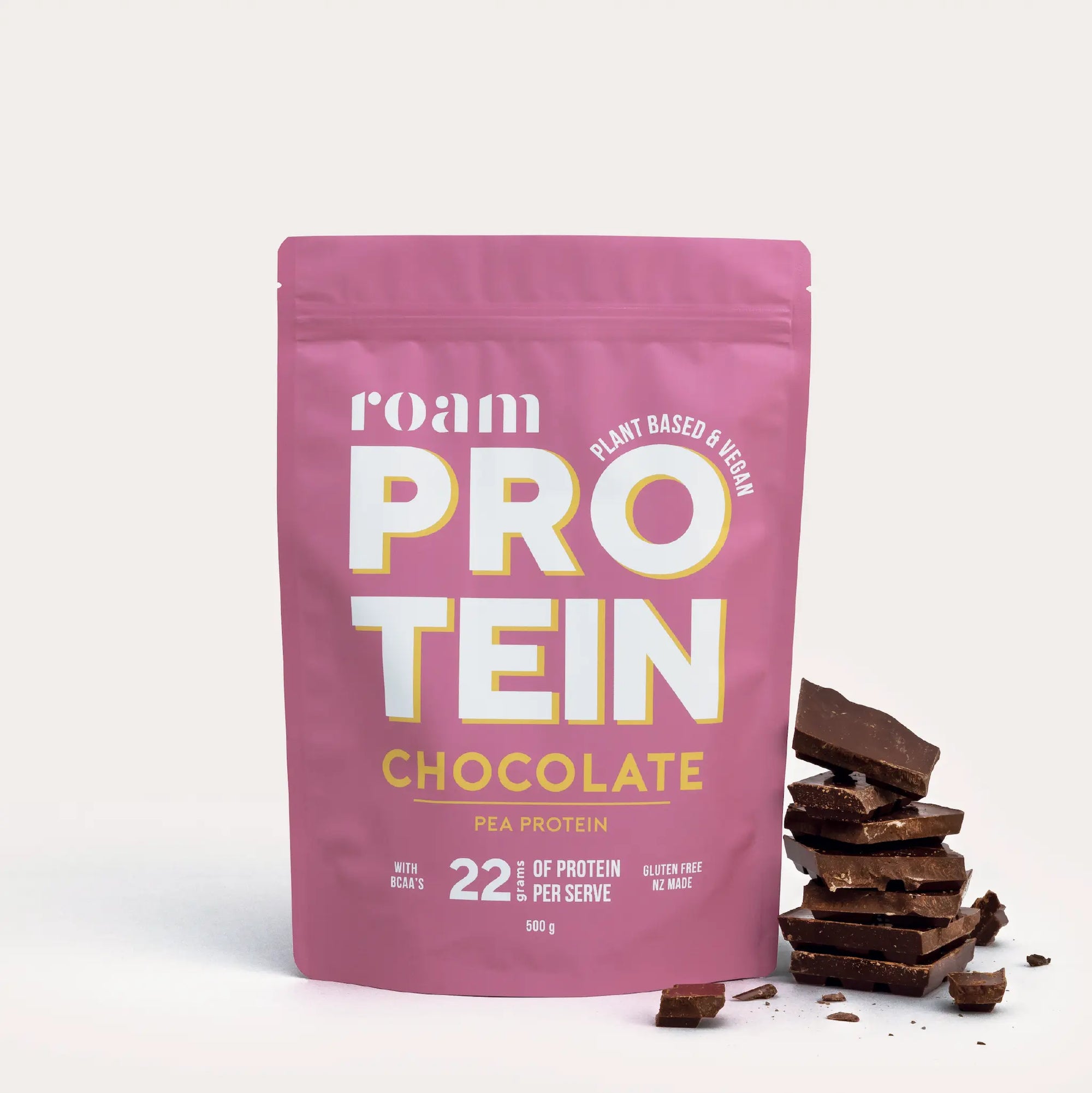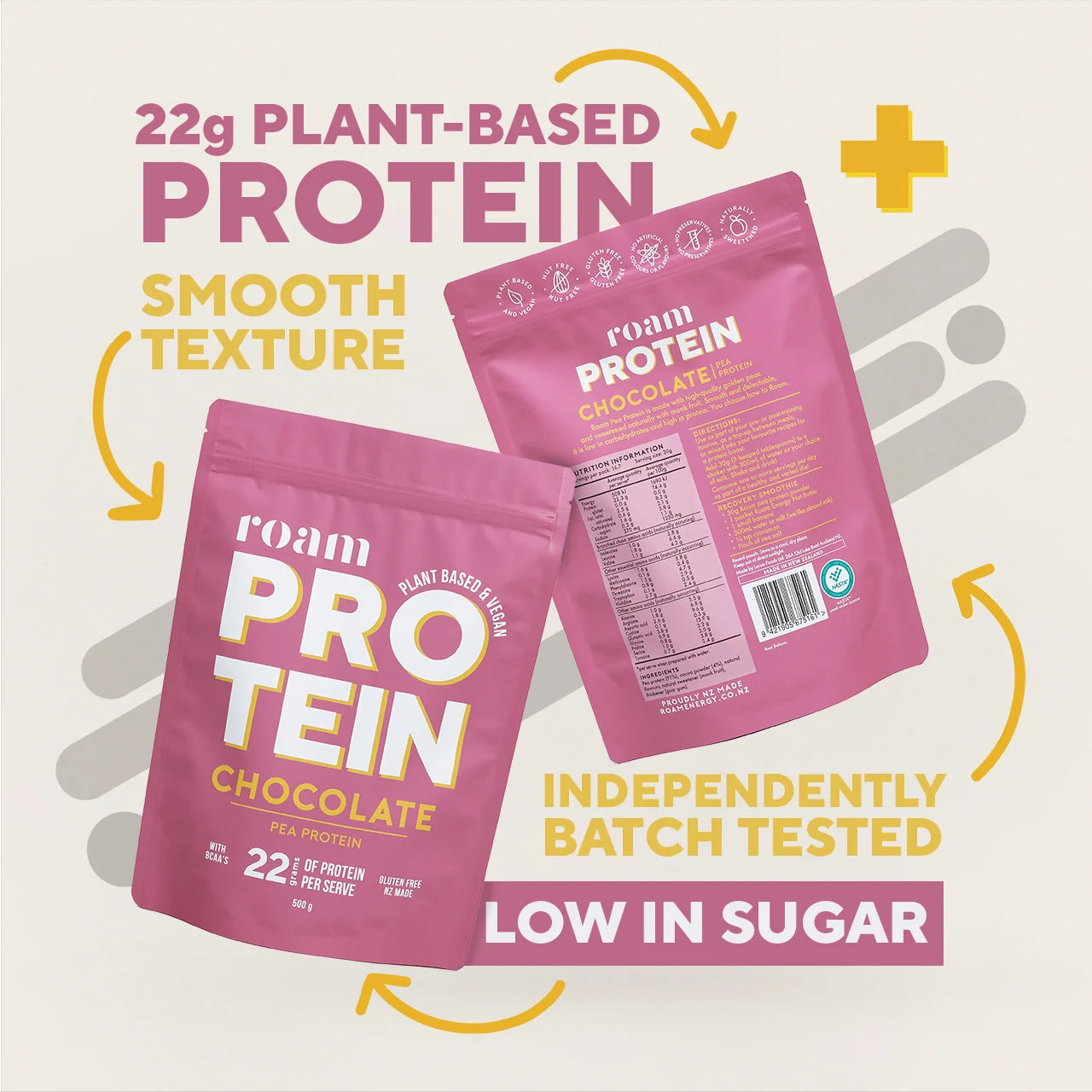Coffee with Andrius: Episode Six
Muscle Cramps During Exercise
In this video, Andrius talks about muscle cramps during and after exercise. What exactly are muscle cramps and what causes them? And most importantly, what preventative strategies and immediate remedies can we use to manage them?
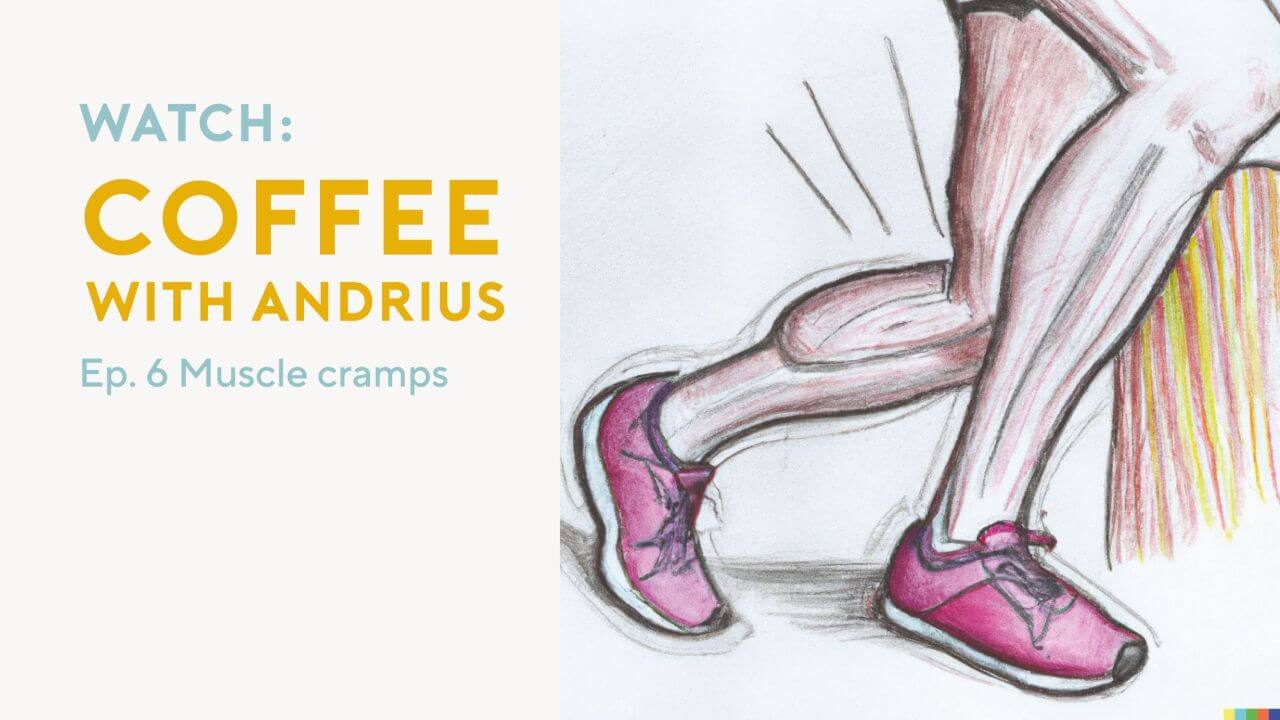
Video transcript
Have you ever experienced a muscle
cramp during exercise? It can be extremely painful and frustrating, especially if that happens early on in your session. Let's dive in and talk about what muscle cramps are, why they happen and what we can do about it to prevent and deal with them.
Q. What are exercise-induced muscle cramps?
Muscle cramps are painful and spasmatic contractions of skeletal muscle that occur during or after physical exercise. Muscle cramps commonly occur at the end of longer efforts when your muscles are fatigued. Cramping can also become more common when exercising in the heat.
Q. How do cramps usually present?
The location and intensity of muscle cramps can vary drastically. Some experience only light twitching in the muscle that resolves within seconds, but others experience more widely spread uncontrolled contractions of muscles that are difficult to release and the consequences can be felt for several days.
There are several medical conditions and emergencies that can also induce unexpected muscle cramping, but these should not be confused with exercise-related cramping.
Q. Why do muscle cramps occur?
It is likely that muscle cramps are caused by different mechanisms. Commonly debated theories as a cause of exercise-induced muscles cramps are (1) the disturbance of electrolyte and hydration balance, and (2) changes in neuromuscular control, mainly because of muscle fatigue. Both theories have good arguments and in my opinion both can cause muscle cramps in certain situations.
A quick thought experiment: Calf muscle cramps can be induced at home by doing calf raises for several minutes non-stop. This suggests a neuromuscular regulation issue (you probably agree that it is nearly impossible to dehydrate and loose electrolytes in that amount of time). Similarly, you may have noticed that when exercising at a low intensity on a hot summers day, the threshold for muscle cramps seems to be lower, which suggests that hydration may be the culprit for your muscle cramps.
Q. How do electrolytes control how
muscles contract?
Several electrolytes like sodium and potassium play a key role of transmitting signals through nervous system to muscles to contract. The disturbance of electrolyte balance or loss of either mineral will affect communication between nerves and muscles, and make your muscle more susceptible to muscle cramps, especially when they are tired.
Q. What is the relationship between sweat rate and electrolyte loss and cramping?
There are some studies that show athletes who lose larger amounts of sodium in sweat are more prone to developing muscle cramps. Some people sweat a lot during exercise and others less; however the range of sodium loss per litre of sweat is large. People can lose from 0.5 to 1.6 grams of sodium per litre of sweat.
Fortunately, we have a significant sodium storage in our bodies, so we don’t need to worry too much about replenishing all sodium losses while we are exercising. We can leave some of that to our post-workout meals and drinks.
I think it would be unreasonable to set a specific target for sodium intake during races, given individual variation in sweat sodium loses, variation in environmental conditions. Just make sure that electrolyte drinks and gels you consume during the race have a sufficient amount of sodium if your race will be in hot weather conditions.
Q. How may neuromuscular control cause
cramping?
This one is complex and scientists are exploring this topic to understand it more. The main theory is that muscle cramps can be caused by sustained abnormal spinal reflex activity when a muscle group is fatigued. Motor neurons send signals to your muscles to contract.
Special organs in your tendons, called Golgi tendon organs, act as a opposing force, so that your muscles work in harmony and don’t overstrain. When your muscles are tired, these two systems don’t work together as well. This may lead to uncontrolled muscle contractions (that is, a cramp). This is why often the quickest way to get relief from a cramp is to stretch the muscle. This action lengthens the muscle and stretches the tendon.
There are still many unanswered
questions, for example, why then not all athletes experience cramps at the end of hard and intense races and only selected few are affected by them.
Q. What can we do about cramps?
My approach is to think about ways to prevent the development of cramps before the event, and strategies to deal with cramps as they are happening during the race.
Preventive strategies
- Ensure good hydration and electrolyte status before the race
- Strength training can make muscles more resilient to fatigue.
- Plyometric training will lead to a stiffer and better functioning tendon complex
- Address mobility issues. Often times we can overload a muscle group, which makes it more susceptible to cramping. Working on mobility will spread the load more evenly across muscle groups.
Immediate remedies
- Stretching muscle group that is cramping can help to immediately relieve the cramp.
- Sufficient sodium intake during the race. If you know that you are a big sweater, choose hydration drinks with higher sodium levels.
- There are other compounds that can activate receptors in your mouth and reduce the firing of alpha neurons that drive muscle contraction (e.g. pickle juice, vinegar or other compounds that have an acidic and strong taste). View these remedies as the “ambulance at the bottom of the cliff”. In critical moments they can reduce the intensity and duration of cramps, but solely relying on them will not prevent future cramping episodes.
Reference:
https://www.ncbi.nlm.nih.gov/pmc/articles/PMC5371639/
Explore Roam

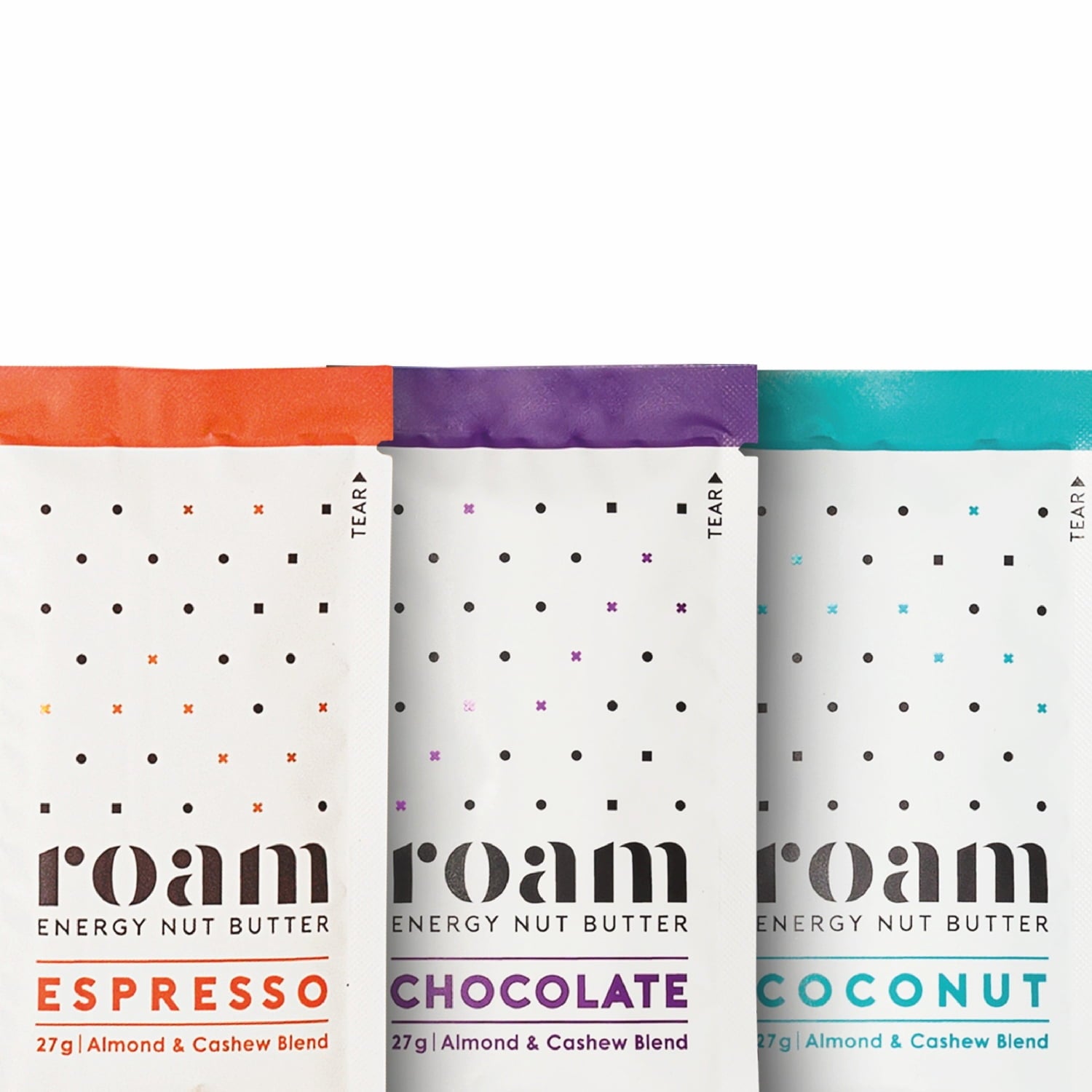 The Ultimate Roamer Bundle
The Ultimate Roamer BundleThe Ultimate Roamer Bundle
Regular priceUnit price per$244.94 NZDSale price $190.00 NZD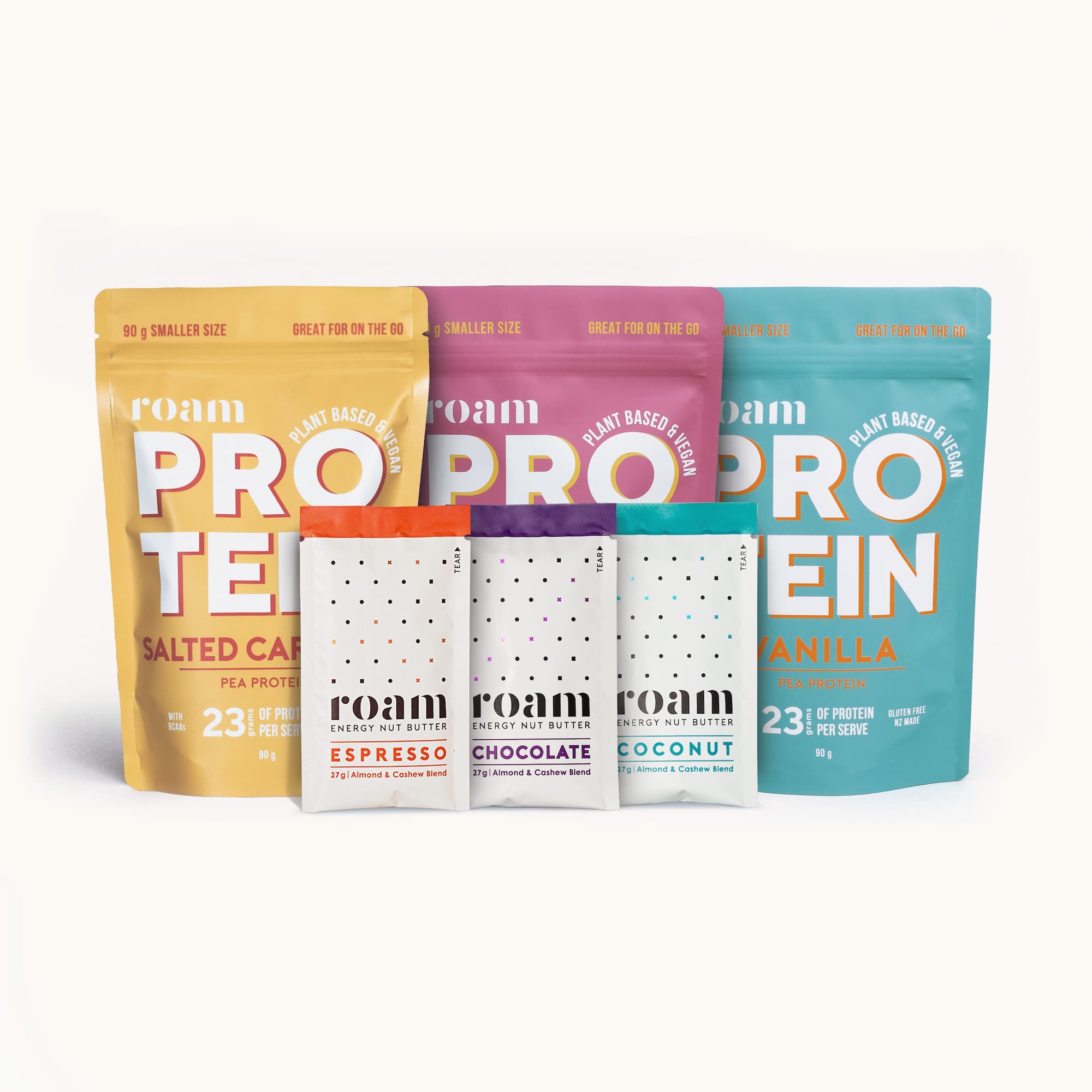
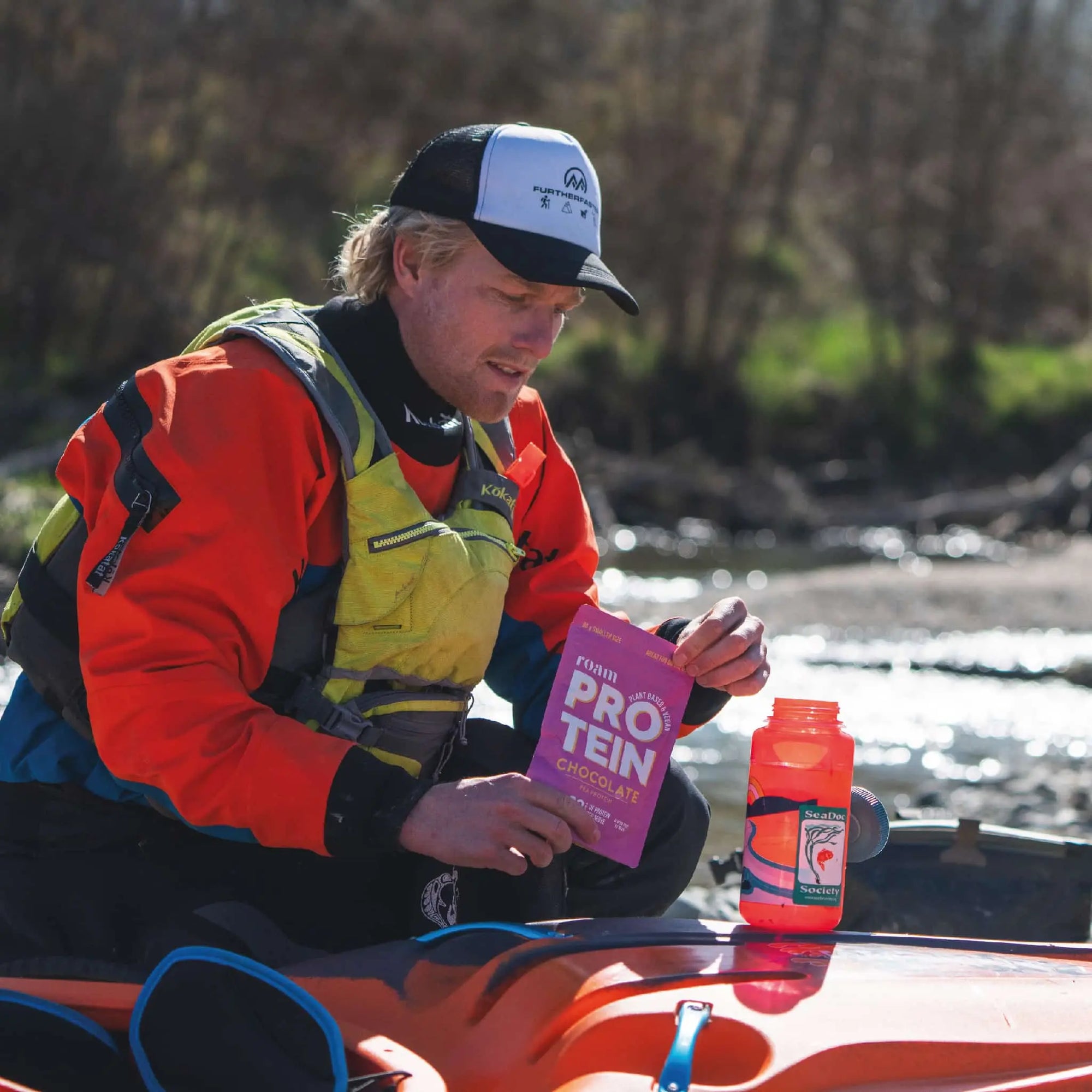

 Trio Protein +Shaker – 90g Protein
Trio Protein +Shaker – 90g ProteinTrio Protein +Shaker – 90g Protein
Regular priceUnit price per$72.98 NZDSale price $55.00 NZD
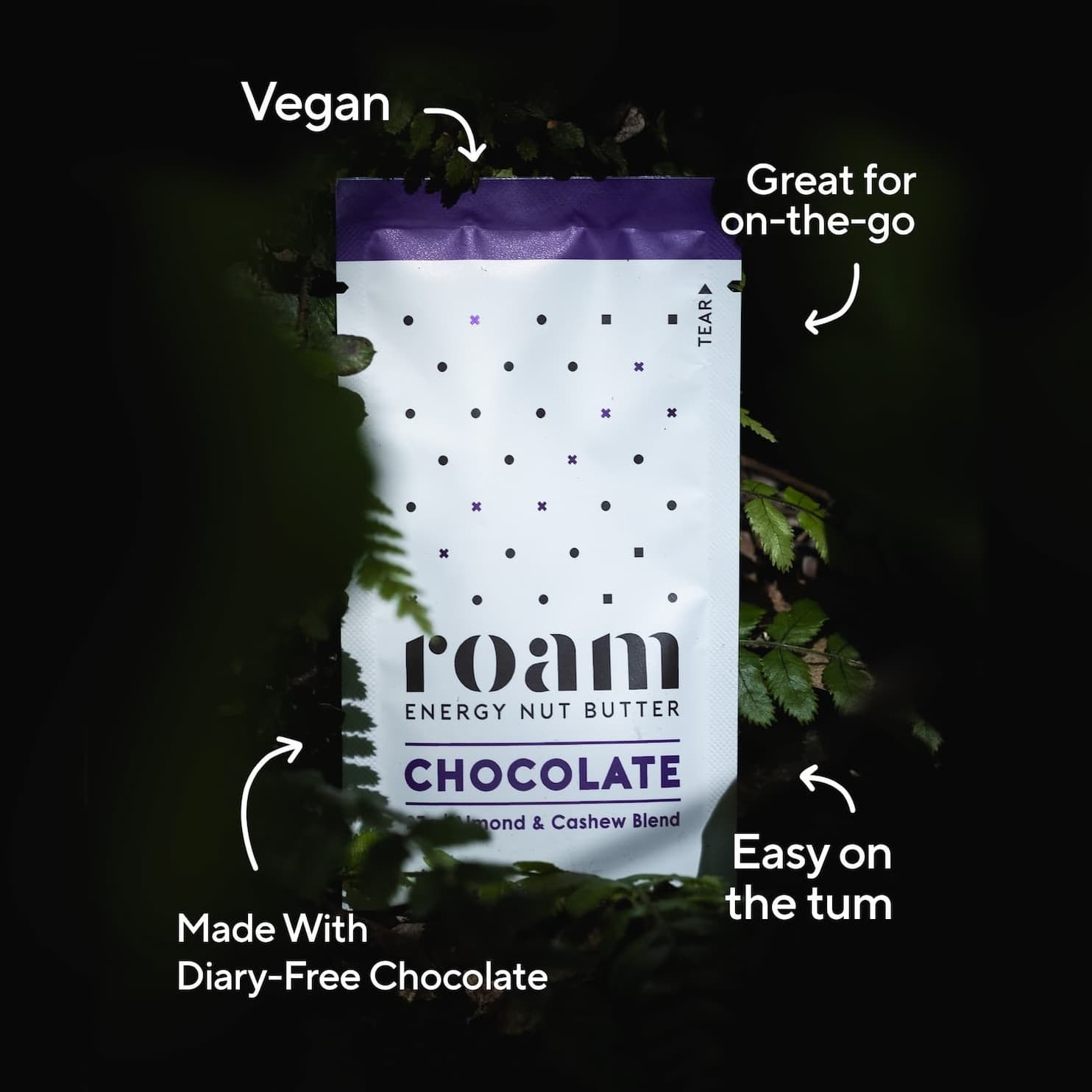 Energy Nut Butter - Mixed Pack
Energy Nut Butter - Mixed PackEnergy Nut Butter - Mixed Pack
Regular price $27.00 NZD+Unit price per